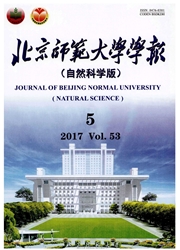

 中文摘要:
中文摘要:
本文利用嵌套网格空气质量预报模式系统(NAQPMS),模拟研究了"9·3"阅兵期间北京市及周边地区主要气象要素和大气细颗粒物(PM_(2.5))质量浓度的时空变化特征,结合污染物源解析的方法,定量分析了基准和减排情景下各周边源地对北京市近地面层PM_(2.5)质量浓度的贡献.结果表明:1)NAQPMS模式系统能较好地模拟北京市PM_(2.5)质量浓度的时空变化特征;2)协同减排控制措施有效降低了首都地区PM_(2.5)质量浓度,阅兵活动当天PM_(2.5)质量浓度削减率高达31%;一次PM_(2.5)排放量大,下风向特别是风场辐合区等污染物易累积的地区减排后的削减程度大;3)阅兵活动期间,北京市PM_(2.5)质量浓度最主要的贡献来源于本地排放,日平均贡献率最高达48.6%,河北东南部、中部及河南等地是其主要的外来源地,日平均贡献率最高分别为21.1%、17.6%和16.4%;4)相比于基准情景,减排情景下北京及周边减排力度较大的源地贡献率显著降低,其中北京降幅最大,达2.2%.
 英文摘要:
英文摘要:
Nested Air Quality Prediction Modeling System (NAQPMS) was used to simulate temporal and spatial variations in the main meteorological parameters and PM2.5 in Beiiing and surrounding areas during the parade. An on-line tracer tagging module was applied to calculate contributions of emission from different source areas to PM2.5 concentration in the Beiiing area under two scenarios: baseline and emission-control scenarios. The Modeling was found to generally reproduce the main variation characteristics of PM2.5 in Beijing. Pollutant control measures were found to reduce PM2.5 concentration in Beijing effectively, with a) 31% reduction rate on September 3, 2015. Since pollutants tended to accumulate, the reduction of PM2.5 could have been higher when with convergence in wind field or with large emission of primary PM2.5 During the parade, local emissions were the most important source of PM2.5 in urban Beijing, maximum daily average contribution to PM2.5 concentration was up to 48.6%. Southeast Hebei, central Hebei and Henan Province were maior external source areas, with maximum daily average contributions to PM2.5 concentration of 21.1%, 17.6%, 16.4% respectively. Contribution to PMasin Beijing from the areas taking stronger emission control measurements decreased more significantly, with decrease peak down to 2.2% in Beijing area.
 同期刊论文项目
同期刊论文项目
 同项目期刊论文
同项目期刊论文
 期刊信息
期刊信息
